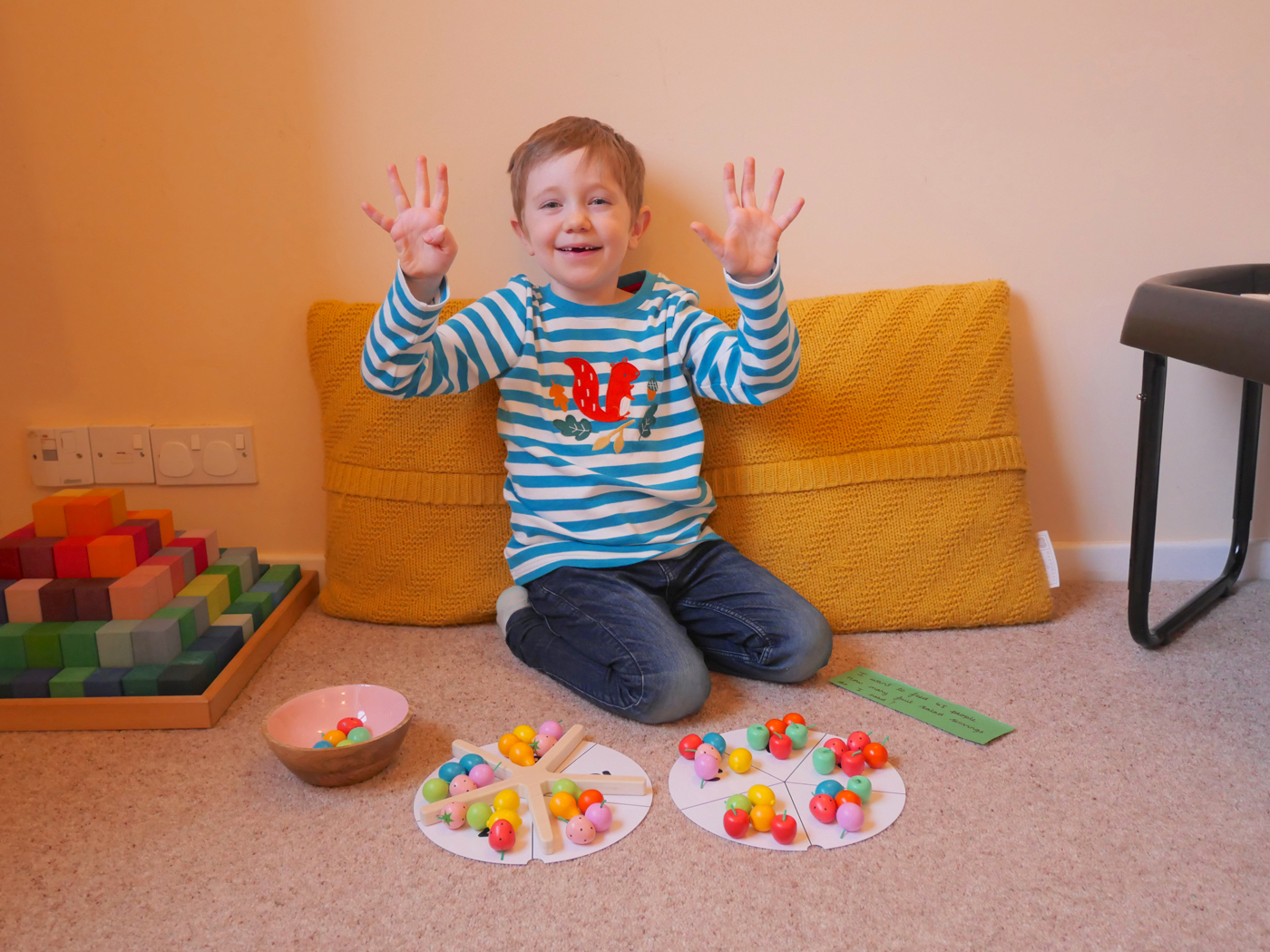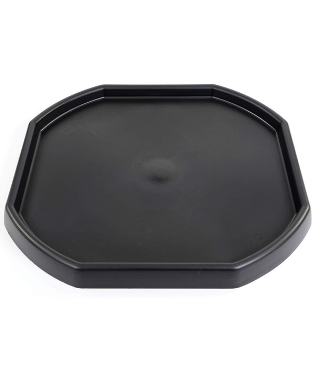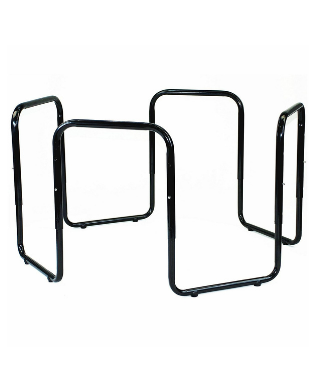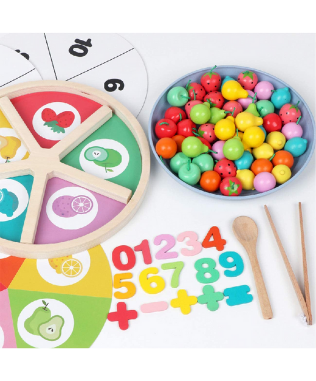Following on from sharing in to equal groups and dividing by 2, Ioan looked at dividing by 5.
Resources
- Tuff tray
- Bath crayons
- Flowers
- Fruit classification game
- Crystal vase fillers
- Base ten set
Method
Here are some flowers. Draw groups around groups of 5. There are 30 flowers.
Ioan completed the first step.
He then counted up and filled in the blanks for the number sentences: “There are _ in each group. There are _ groups.”
To do this he needed to know that: 30 flowers shared between 5 is 6.
The ‘shared between‘ can be replaced by a ÷ symbol, because ‘shared between’ means divide by.
The ‘is‘ can be replaced by an = sign.
He worked out that if he knew 30 ÷ 5 = 6, then he could also write 6 x 5 = 30.
Multiplication and division are inverse operations. Start with 6, then multiply it by 5 and we get 30. Now divide 30 by 5 and we get back to 6. These facts are part of the same fact family.
A fact family is a set of four related multiplication and division facts that use the same three numbers.
For this example: The fact family for 5, 6 and 30 is a set of four multiplication and division facts. Two are multiplication facts, whereas the other two are division facts.
Ioan explained that you can just swap the numbers around because 30 ÷ 5 = 6 is the same as 30 ÷ 6 = 5.
Similarly, you could write 6 x 5 = 30 or 5 x 6 = 30.
Looking at arrays
Ioan set his crystals out in arrays. He made columns of 5, then drew around them.
After filling in the number sentences, I challenged him to find the other multiplication and division facts in the fact family.









Solving word problems
A word problem is a written ’real-life’ scenario where a problem needs to be solved using a mathematical calculation.
They are an important part of learning, because they require children to apply their knowledge of various different concepts to ‘real-life’ scenarios, as well as helping them to familiarise themselves with mathematical language.



Ioan picked the orange question to start with. There were 50 pieces of fruit in the bowl, he grouped them in servings. There were five pieces of fruit in each serving. The numbers made it easier to keep track of how many servings he was making.
As all 10 numbers were filled, he knew that he could make 10 servings of fruit salad.
He also told me that 5 x 10 = 50.
To work out how many fruit salad servings he would need to feed 45 people, Ioan counted the servings of fruit in fives up to 45. There were nine fives, so he knew the answer was 9.
This time he was sharing the fruit in to five portions in order to answer the questions. The first step was to work out that there were 15 pieces of fruit altogether. Then he had to work out that there were 5 portions, with 3 pieces of fruit in each portion.
Next, he had to work out the fact family for the group of questions above.
For 15 ÷ _ = _ he explained could write 15 ÷ 5 = 3 or 15 ÷ 3 = 5. The multiplications could have been written either as 3 x 5 = 15 or 5 x 3 = 15.









For the blue question, Ioan identified that to work out how much two strawberries cost, he first needed to figure out the cost of one strawberry. He split his 50p, which he represented with 5 ten rods, into 5 equal groups. This meant each strawberry was worth 10p.
Obviously, Ioan couldn’t hold his whiteboard up to show me, without the ten rods falling off. He had a solution to this, he drew his two ten as 20 ‘ones’ in arrays.
Before and after
DfES Outcomes for EYFS and National Curriculum (2013)
Numeracy Year 2 programme of study
Number – multiplication and division
- recall and use multiplication and division facts for the 2, 5 and 10 multiplication tables, including recognising odd and even numbers
- calculate mathematical statements for multiplication and division within the multiplication tables and write them using the multiplication (×), division (÷) and equals (=) signs
- show that multiplication of two numbers can be done in any order (commutative) and division of one number by another cannot
- solve problems involving multiplication and division, using materials, arrays, repeated addition, mental methods, and multiplication and division facts, including problems in contexts.




























